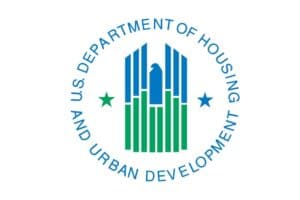The Internal Revenue Service (IRS) today released its updated audit technique guide (ATG) for the Low-Income Housing Tax Credit (LIHTC) program. This guide was prepared to assist IRS examiners in auditing owners of LIHTC properties.
Summary of Revisions
- Chapter 2, Precontact Analysis, now includes Exhibit 2-1, IDR & Crosswalk to Issues. This explanation of documents to request from the taxpayer includes references to the chapters in the ATG related to the documents.
- Chapter 7, No Longer Participating in the IRC §42 Program, includes an expanded discussion of the state agencies’ authority to determine that a building is no longer participating in the program (see page 7-1).
- Chapter 8, Eligible Basis: Includable Costs:
- The definition of “Residential Rental Property” on page 8-1 has been expanded to reference Notice 88-91, which explains that a townhouse can be a “qualified low-income building” along with apartment buildings, single-family dwellings, row-houses, duplexes, and condominiums.
- The discussion of deferred developer fees, starting on page 8-19, clarifies that a deferred developer fee may be documented by a note or by another document.
- Chapter 12, Applicable Fraction
- A new section titled “Units Occupied by On-Site Managers, Maintenance Personnel, and Security Guards” was added on page 12-9. Audit techniques for this issue are outlined on page 12-14.
- A new section titled “Emergency Housing Relief” was added on page 12-9, and references revenue procedures 2007-54 and 2014-49.
- “Deep Rent Skewing” on page 12-17 was revised to correct a technical error. #1 on the list now correct-ly explains that, for deep rent skewed units, the gross rent does not exceed 30% of the applicable income limit applicable to the individuals occupy-ing the unit.
- “Casualty Losses in Federally Declared Disaster Areas” was expanded to include reference to newly released Rev. Proc. 2014-49.
- Examples #4 and #5 on pages 12-44 and 12-45 were expanded to demonstrate the computation of the applicable fraction for the first year of the credit period under IRC §42(f)(2)(A) using the lesser of the Unit Fraction or the Floor Space Fraction methods as required by IRC §42(c)(1)(B).
- “Project Defined” on page 12-47 now in-cludes Treas. Reg. §1.103-8(b)(4)(ii) as a reference, as well as IRC §42(g)(7).
- Chapter 17, Examples, was expanded to include a new section on page 17-4 titled “Partial Disallowance of Credit During the 10-Year Credit Period.”
- Appendix C, Treatment of Assets/Costs for IRC §42 Purposes, has also been expanded.
- Accounting Costs are separately addressed on page C-1.
- A new category titled “Acquiring Occupied Building: Tenant Relocation Costs” has been added on page C-10.
- The section titled “Real Estate Taxes” on page C-10 has been expanded to include taxes incurred during the pre-production period.
- IRC §266 is addressed in a new section titled “Carrying Charges Other Than Interest” on page C-11.
The last time the guide was updated was in 1999. The IRS released a draft of the guide for public comment in December 2013 and the IRS accepted comments until the end of March.
Click here to view the updated IRS Audit Technique Guide.
Click here to view LIHTC Newsletter #56 to read a summary of the changes


